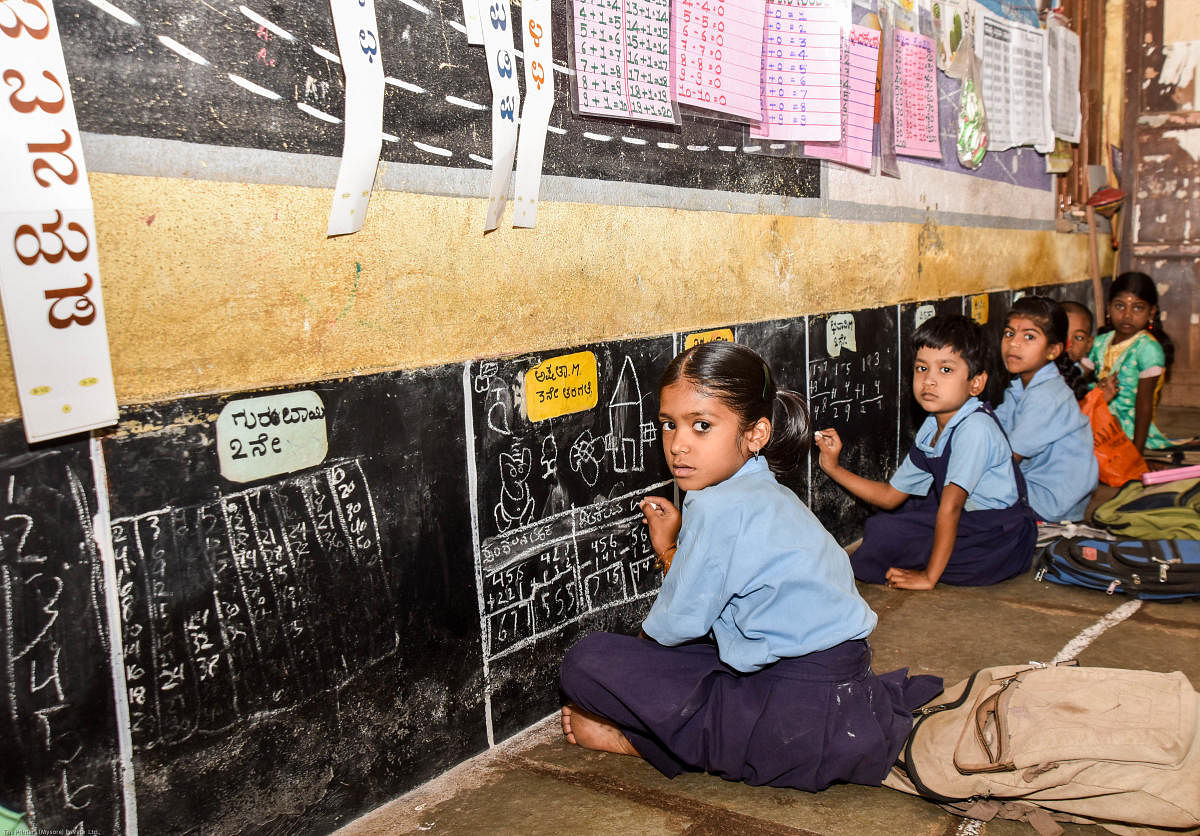The Union Budget this year finally prioritised school education and, out of Rs 93,847.64 crore for the education sector for 2019-20, Rs 56,386.63 crore was earmarked for school education. Of that, Rs 36,472.40 crore is for pre-primary school education. While more could have been done, a start has been made.
Whatever the budget may be, the children’s actual learning in schools should be our priority. We have made progress in the areas of expansion, enrolment, retention and even inclusion to a certain degree. It is the lack of quality in our education system that we should now focus on. The findings of various third-party assessments are warning signals about the abysmally low learning levels of poor students.
We need to understand that all children coming from poor backgrounds are not the same and one policy cannot fit all. Children from rural parts of the country need a different approach. Children from urban slums need specific interventions that are not necessary in the villages. Having worked with poor urban children from 100 slums for more than 15 years, I realise how little we understand the obstacles that the children from the slums face. Their daily encounter with severe denial of nutrition, healthcare, decent infrastructure has a debilitating effect on their ambition and long-term plans. Additionally, the negative impact of the neighbourhood is formidable, and not many can overcome such hurdles on their own.
We must deal with the problems one by one. Let’s look at space, for instance. Most urban slum children come from cramped, unhygienic 100-square-foot rooms that accommodate five people at least. There is no privacy and that leads to a lack of dignity. Children become aware of adult conflicts and witness violent sexual and alcoholic behaviour at a tender age. In school, they come to dark classrooms and toilets that cannot be used. The lessons are boring and they are known by their roll numbers, and not given the dignity of a name.
With the focus on completing the syllabus, and textbooks being the only resource available, the teachers of a government school begin with a handicap. A space for after-school self-study, where the children live, will make a great difference. This monitored community space can keep the children safe from bad company, abuse and allow them to do their homework in peace.
Schools for the poor, whether government or private, should give the children a totally different experience. The classrooms must be cheerful, colourful and, even if small, well ventilated. Most government schools are in the centre of the locality and have adequate space, with even decent playgrounds. It is another matter if the window-panes are shattered. The broken-down play equipment is actually a safety hazard. The common complaint is about no budget for maintenance. And yet, there are always ways out. I know of headmasters of some schools who have negotiated with the fathers of their students who are masons and carpenters to contribute their skill to do repair work. This brings pride and ownership of the schools in the community.
We need to recognise how important the look of the walls of the classroom is to a child’s learning. The response “this doesn’t matter to our students because they are not used to it” just won’t do. In fact, they need to have it more, because they don’t have it at home. Similarly, if they are spoken to roughly at home, all the more reason to speak to them gently and with dignity in school. The contrast should be so significant that the children actually realise that there is another way to behave. The entire school ecosystem will need to work together to give the children an enriching experience. Art, music, good books in the library, classes on self-expression are essential for these children that come from dehydrated backgrounds, where just survival is the priority.
Learning begins late
And all this must begin very early. There are many factors that hold poor children back from integrating with the mainstream. Apart from lack of facilities, constricted thinking, uninspiring environment and absence of a world-view, a poor child’s learning and exposure begins very late in government schools. According to the 2011 census, there are some 375 million children under the age of eight in India. Nearly 80% of a child’s brain development is complete by that age, which places a huge importance on the early education years between the ages four and eight. And yet, government schools only begin with Grade 1, when the child is already past six years. It is for this reason as well that much of the RTE policy is not really working. Catching-up becomes insurmountable for the poor child.
In most schools, primary school teachers are paid the least and treated the worst. It should be the opposite. We need to put the best teachers in Grades 1 to 3 because they are the ones who lay the foundation of knowledge and values in the children. With a solid foundation in place, the children can easily be independent learners. But this cannot be left to the teachers alone, the entire education ecosystem of both government and private sectors must acknowledge the importance of early education.
Despite all deficiencies, I am optimistic because, at last, the conversation in education has slowly started to shift from the importance of infrastructure and inputs. We are now talking about improving quality in terms of outcomes. But we need to be honest about where we have failed in the past and find new, innovative ways to prepare for the future. Most importantly, we must try and understand the child from a poor background and make policies that are sensitive and child-friendly, rather than being just process-driven, which looks good only on paper.
Whatever we decide to do, we need to do it fast because every day in a child’s life counts. And, it has to begin early.
(The writer is Founder-CEO, Parikrma Humanity Foundation)
